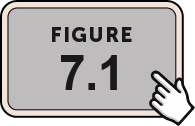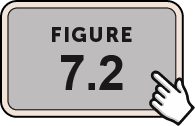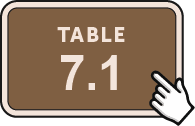Show Navigation Menu
Section Two : Becoming a Researcher/Scholar
Introduction | The Writing Process | Voice | Tone | Using a Style Guide | Paraphrasing vs. Quoting |
Chapter 7: Preparing for Writing
Hide Navigation Menu
Home Page
Section 2 Becoming a Researcher/Scholar / Chapter 7 Preparing for Writing
2. The Writing Process
What Am I Writing About?
When preparing to write a paper, doctoral learners should ask themselves the following questions:
• What am I writing about?
• What is the purpose of this paper?
• What are the main points I want my readers to understand?
• Who is the intended audience?
The purpose of a paper will shape its formation. A persuasive essay will look quite different from a research paper, so before doctoral learners begin to write, they should be clear about the purpose of the paper. Doctoral learners should consider the goals they hope to accomplish with their papers, and what it would take to accomplish those goals.
While in a doctoral program, the standardized course materials provide the purpose and topic of many assigned papers. For this reason, it is crucial for learners to read the instructions for the assignment thoroughly. Rewriting each element of the instructions can help to ensure that learners have a clear understanding of the expectations. These notes can be used later to form the paper's basic outline or headings. In addition, the instructions may provide the paper's headings.
Summary vs. Synthesis
When writing an academic paper, it is crucial to have a clear understanding of the purpose of the paper. Is the paper meant to be an analysis, a comparative analysis, a research paper, a persuasive argument, or other form of academic work? Operational definitions of these terms might be helpful:
• Analysis deconstructs material into component parts, offering interpretations and explanations of those component parts (Beaney, 2014).
• Comparative analysis functions to compare and contrast two or more items.
• Research papers traditionally offer a thorough explanation of a given topic.
• Persuasive arguments are pieces that attempt to persuade the reader to align with the author’s viewpoint.
A key element in determining what type of paper is expected is having a clear understanding of the difference between summary and synthesis. A summary is a recapitulation of the major themes, arguments, or points from a source. It does not add any new information, but condenses the information presented in the source into a more concise synopsis. A synthesis, in contrast, will link information or conclusions from multiple sources into a new body of text (Solé, Miras, Castells, Espino, & Minguela, 2013). To conceptualize synthesis, think of baking a cake. Each ingredient in the cake is like a summary: It is a small portion of a larger source. The combination of the ingredients creates something new: The final result, the cake, highlights the relevant flavors from the ingredients, and the result is a final product that is more than the sum of its parts. A synthesis is the highlighting of ideas from relevant sources, combined with critical thinking about those sources, and the integration of those concepts into the learner’s own words (Mateos & Solé, 2009). When drawing conclusions, making interpretations, or analyzing material, it is crucial to substantiate those conclusions, interpretations, or analyses. A synthesis is not a presentation of personal opinion; it is an integration and elaboration of source material (Solé et al., 2013).
Brainstorming
Although brainstorming typically is conceived of as a group activity, research indicated that an individual working alone produces more ideas than a group of individuals working together (Byron, 2012). Brainstorming as a group practice was developed by Alex Osborn, and the first mention of the word appeared in his book Applied Imagination: Principles and Procedures of Creative Thinking, published in 1953 (Goldenberg & Wiley, 2011). Osborn proposed that four rules, or standards of practice, should be observed to encourage positive results in a brainstorming session:
1. Reserve judgment and evaluation of ideas.
2. Quantity over quality—the more ideas presented, the more productive the session.
3. Do not restrain ideas, but allow potentially bizarre ideas to emerge.
4. Seek to improve, refine, and combine ideas in new and different ways (Byron, 2012; Goldenberg & Wiley, 2011).
The same guiding standards of group brainstorming can be applied to individual brainstorming prior to writing a paper. Learners can try the following exercise. Set a timer for 5 minutes, and using whatever method is most comfortable and natural (e.g., pen and paper, word processing program, or whiteboard), record anything that comes to mind. Grammar, spelling, and the formation of coherent sentences should be ignored, as the focus should be on generating thoughts and ideas, no matter how ridiculous or wild. Any judgment or criticism should be withheld, as the brainstorming session is not about generating brilliant ideas that will win Nobel or Pulitzer Prizes; it is about generating ideas and research paths to follow. After the time elapses, or as the initial rush of ideas ebbs, learners should examine the thoughts and ideas written thus far. Can these concepts be refined? Do they align to the purpose and topic of the paper? Can they be improved upon, combined, or modified to serve the purpose of the paper? After brainstorming an initial list of ideas for the paper, those thoughts may be organized into a more coherent format.
Outlines and Graphic Organizers
There are numerous ways to organize content in preparation for writing a paper. Doctoral learners are encouraged to try several methods until they find one that works well and fits their individual style. In the end, the exact method of organization matters less than the fact that the information was organized. Attempting to write a paper with disparate ideas floating in the ether or written on scraps of paper is not practical. Attempting to write a paper with organized ideas and a clear visualization of the paper’s structure and end goal is practical and achievable. This section will describe two common methods of organizing information.
A linear outline is a common method of organizing the main points of a paper prior to writing. An outline sets forth the thesis, and lists the major points that will be made to support or prove the thesis. Each major point can be further elaborated upon with minor points and subtopics. A linear outline is a map of an assignment, with a clear path from Point A (the thesis) to Point B (the conclusion). The path between the two points is composed of the major points and subtopics presented to support the thesis statement. Major points are the foundation of the paper, as each major point provides support to the thesis and moves the paper forward. Minor points support the major points by adding additional details or evidence from the literature or studies on the topic.
Doctoral learners with learning styles that may not benefit from the linear nature of the written outline should consider creating a concept map. A concept map is a visual tool to aid in connecting the disparate ideas created in the brainstorm session. One method for creating a visual map is to write the topic of the paper in the center of a piece of paper and draw a circle around it. Surrounding the center circle are circles containing different elements related to the topic that should be addressed in the paper. Those supporting ideas or topics are then connected by drawing lines and arrows between the circles. The ideas in the concept map and outline will provide the basis for the research.
Finding Research Themes
A good place to begin writing a research paper is to conduct research by searching academic databases for peer-reviewed articles, scholarly books or book chapters, and academic reports. It may seem overwhelming to start writing a paper with that amount of information, so it is helpful to find themes within the research studies and literature to guide the writing process. At this stage of the process, themes refer to general keywords, ideas, and categories related to the research topic of the assignment.
The outline or concept map created after brainstorming may prove helpful in determining which themes to search for within the research studies and literature. For example, according to the outline in Figure 7.1, this paper argues that individuals with bipolar disorder are at increased risk for suicide, and should receive comprehensive mental health treatment. Relevant keywords to enter in the search engine may include: bipolar disorder diagnostic criteria; suicide statistics and information, both general and specific to bipolar disorder; specific bipolar symptoms’ relationship to suicide risk; and treatment methods, including psychotherapy and pharmacological. By searching for themes and categorizing the paper outline based on those themes, relevant sources can be located easily to support the argument.
Using Rubrics and Word Counts to Guide Writing
If there is a rubric associated with a writing assignment, doctoral learners should use it, in addition to the assignment instructions, to guide the writing process. Instructors will grade according to the rubric, so it is logical to review the rubric before writing to ensure that all required elements are addressed. Learners should look for key words within different levels of the rubric to determine the expectations for the assignment, as well as the difference between an A paper and a B paper. Comparing the rubric to the assignment instructions allows learners to determine a complete set of criteria to meet for the assignment.
Notice in the rubric (see Table 7.1), the highest grade in Row 1 (Introduction) can be achieved by providing an introduction that relates to the paper and contains information that “is intriguing and encourages the reader to continue reading.” This tells doctoral learners exactly what they must do to achieve a high score, so it would behoove learners to consider the expectations as they begin the writing process.
In addition to considering the items listed in the grading rubric, doctoral learners should look for the word or page count expected for the assignment. This will provide a range of words or pages expected, which allows learners to anticipate the amount of space and time to devote to each section of the paper. It is best to attempt to stay within the word range provided for a paper, as instructors differ on their word-count policy. Some instructors hold strictly to the word-count limit, and will stop reading a paper after the limit has been reached. Other instructors will deduct points for going over the limit, but will read the entire paper. Still other instructors will read the entire paper for content and depth of analysis and coach the student on editing. For those instructors, the paramount concern is for learners to thoroughly address the questions asked in the assignment prompt rather than meet a word-count requirement. If learners are concerned about going over a word-count limit, it is always best to ask the instructor about his or her policy. Doctoral learners concerned that they will not be able to meet the word-count expectation are encouraged to go back to the brainstorming and outlining phrase of the writing process to generate more ideas for the assignment.
Read
Before doctoral learners can write a paper, they must read other papers, peer-reviewed articles, and books. The idea that students can pull a quality paper out of thin air without doing the required reading is an urban legend. Doctoral learners should complete the required readings for a particular assignment, and then go beyond the basic requirements to expand their understanding and knowledge of a subject. They should look for additional resources they can use later to support their arguments, as conducting external research is a hallmark of a doctoral learner. Moreover, learners should read in a proactive way; take notes, carefully noting the source with proper citations. Extra work now in constructing APA style citations and references will only save time and effort later, so learners should take the extra time to organize notes and citations. Utilizing all available resources, including the APA manual, DC Network, and the GCU Writing Center will also help leaners save time.
Beyond providing material for research papers, the act of reading serves the dual purpose of expanding a learner's academic vocabulary. Doctoral learners reading the literature in their chosen field will encounter words and phrases unique to that field, and they should take the time to look up unfamiliar words and learn their definitions. Again, extra work in the research phase will save time in the writing phase, so learners are encouraged to spend time understanding the words encountered in the reading.
It Takes Time
Many learners say, “I work best under pressure, so I’m going to wait to start my research paper.” This may be true for 0.01% of students. For the other 99.99% of students, this most likely is a myth they have begun to believe after years of working feverishly under a deadline. Human beings do their best work if they are prepared, take breaks, and do not attempt to finish a 19-page paper in 6 hours. The amount of time it takes to write a paper varies for each learner, but it is safe to assume that it will take hours. It is important for learners to plan extra time in their schedules when completing papers, as it is helpful to finish a paper prior to the deadline. By completing a paper early, the learner has time to submit the paper to TurnItIn, review the report, and make any necessary revisions.
Take Breaks
Neuropsychological research indicated that taking breaks and giving one's brain a rest is invaluable (Ariga & Lleras, 2011). When writing, learners should take a short break and do something unrelated. Ariga and Lleras (2011) argued that one reason learners may start to lose focus on tasks is that their brains habituate to the task, whether it is reading or writing. Habituation is the state of being so used to a task or other stimulus that a person can no longer pay attention to it (Sternberg, 2009). By taking a break from the task and doing something else, learners' brains dishabituate from the previous task. This means they are no longer accustomed to that task, and when they return to it, learners will be able to pay attention to it again. Essentially, their brains have been refreshed. Taking breaks will help doctoral learners return to the paper or their reading assignment with fresh eyes; learners may realize that paragraphs do not make sense, see errors they previously missed, or reach conclusions they had not thought of before.
Plan Ahead
Writing a quality paper takes time, and to give it the time it deserves, it is vital to plan. Doctoral learners should estimate the amount of time needed to research the material for the paper, the amount of time needed to organize that material, how long it might take to create an outline, the number of hours required to turn those nascent ideas into a paper, and the time needed to edit, revise, and proofread the paper—and then double it all. It is safe to assume that this process will take longer than the most conservative estimate, and by giving ample time to complete the project, doctoral learners can ensure that it will not be rushed.
Becoming an Effective Scholarly Writer
Scholarly writing is not fiction, nonfiction, biography, or any other genre of prose. It is its own genre, with its own idiosyncrasies and general guidelines. A guiding principle of academic writing is to provide clear and concise material that is free of personal opinion and logical in its arguments and presentation (APA, 2010). A primary purpose of academic writing is to clearly communicate the results of a study, experiment, observation, or other form of research (APA, 2010). Academic writing is distinct from other genres of prose in that it is meant to provide a clear understanding of scholarly efforts (i.e., a research study, a meta-analysis, a literature review, etc.). Nonfiction prose, like creative writing, can use various literary devices, such as foreshadowing or abruptly shifting topics; however, the use of these devices in academic writing would be inappropriate and contrary to the purpose of providing a clear understanding of the topic (APA, 2010).
Becoming an effective scholarly writer takes time, practice, organization, and attention to detail. Scholarly writers cannot just write the first things that come to mind and assume it is a quality piece of writing; they must attend to details of academic voice and tone, vocabulary, objectivity, and consistency with the style of their field. Above all else, however, becoming an effective writer takes time and practice. It is a dynamic process, and being open to feedback provides direction for continued growth.
Developing a Personal Process
The process of sitting down and writing is different for each writer; each person has his or her own unique habits and routines. Some basic logistical ideas for facilitating the writing process include working in a space free of distractions, completing the readings and research before beginning the writing process, keeping reference materials close, and starting with an organized approach to the paper. Doctoral learners may wish to start this process with the brainstorming exercise suggested above, followed by creating an outline or concept map for the ideas generated in that brainstorming session.
As learners sit down to write the body of the paper, they should just try to write. Get the ideas onto the paper or word processing document first, and worry about editing and cleaning up language and sentences later. Learners can always go back and rewrite a rough sentence into a scholarly masterpiece, but the core of that idea must first exist.

Doctoral learners should consider the goals they hope to accomplish with their papers, and what it would take to accomplish those goals.

Figure 7.1: Linear Outline, Example Linear Outline

Figure 7.2: Linear Outline, A Basic Linear Outline

Figure 7.3: Concept Map, Example of a concept/brainstorming map
The idea that students can pull a quality paper out of thin air without doing the required reading is an urban legend.

Table 7.1:
Example of a Rubric
Human beings do their best work if they are prepared, take breaks, and do not attempt to finish a 19-page paper in 6 hours.
Becoming an effective scholarly writer takes time, practice, organization, and attention to detail.
